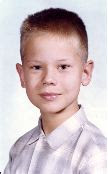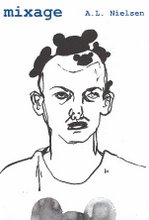Wednesday, March 25, 2015
STAGE 1 AND MUCH MORE TO FOLLOW - E. Ethelbert Miller - The Aldon Nielsen Project 08
Q. Could you talk briefly about your play "Stubs' Lady" which was produced by Arts Out Loud?
That play was in many ways my first step into the public space of writing under my own name.
I had published a couple of poems as a teenager, fortunately in venues so obscure I can be sure nobody will ever find them now. My writing had continued during the time of my draft service, and as I returned to D.C. and returned to school, I felt it was time to begin submitting my poetry to journals to test the waters. Having no clue how this might normally be done, I equipped myself with a copy of Writers Digest and picked two mags out of the listings editors had placed there. One, The Poet, was published by the Fine Arts Council of Milwaukee, WI, and was a special bicentennial year compendium. For who knows what reason, the piece I chose to send them was an anti-capital punishment poem, clearly an odd choice for the occasion but I have never been an occasional poet. The poem was accepted, and the journal accidentally cooperated with my early penchant for anonymity by printing “(continued)” in the space under my poem where my name was supposed to appear. I have no idea if this confused readers in Milwaukee, but it did make it hard to locate my identity in the volume’s index. In fact, my name appeared there as “A.L. Neilson,” reason enough to further reduce my poetic signature to “A.L.”
Which is exactly how I was identified in the very first journal to publish my poetry, and how it was to appear in journals for the next several years. There are a few people in D.C. to this day who call me “A.L.” because that’s how they first saw my name in print. I was twenty-five years old when my poem “My Brother Came Home” appeared in a Pennsylvania-based mag titled Circus Maximus, volume one number two to be precise. The editors liked my poem a lot, though they failed to warn me about the sophomoric mistake of writing the phrase “very silent.” In my defense, as I’ve said before, I was in fact a sophomore at the time, my college education having been put on hold by Selective Service. I was happy to have a poem in a poetry journal, even had a photograph taken of me with my brother and the cat that appears in the poem. (Yes, I published a cat poem! We didn’t have FaceBook in those days.)
As it turned out, the contributors index for that issue included two other D.C. area writers, one Richard Peabody, Jr., and one E. Ethelbert Miller. I had not yet heard of either, but took note of their nearness. I see that Peabody’s year of birth is missing from both his Wikipedia page and his FaceBook page, but for some reason I assumed him to be close in age to myself. The next year he was to begin publishing Gargoyle, a journal in which I appeared a couple times, and we got to know each other a bit. Miller, it turned out, was a few weeks younger than me and already had poems forthcoming in journals I knew and respected such as Obsidian and Greenfield Review. It was to be a couple more years before I got to know him, but so much time has passed that I no longer recall how we first met in person. I do recall that we had spoken before we met. My classmate David Nicholson gave me Ethelbert’s phone number at some point and told me to call him, which I did from my apartment on Swann Street.
When I came up for my first faculty review at San Jose State in the next decade, somebody mentioned my poetry publications along with my critical work and described the poetry journals as “mostly in the Washington, D.C. area,” a note which served as my first lesson in a certain California parochialism I was to encounter again. D.C. being the nation’s capitol, I suppose the whole country is in the D.C. area, so that’s OK with me.
I was publishing in the Federal City College mag, Slave Speaks, and the first readings at which my poetry was read were events where I did not read. Friends in the theater arts department did a much better job than I could being “A.L.” and I was happy to have them bear the burden of being the not-me. A few years down the road when I published a poem in Poet Lore, the editor who sent me the acceptance letter tried to convince me to use my whole name, adding “we think we know who you are,” but they didn’t know. My poetry continued to appear over the initials “A.L.” till I was well into grad school.
But my writer’s name did appear on the posters advertising performances of Stubs’ Lady. This seemed a good first step to me, as my name could appear before a public without me appearing.
I’d had this vision in my head that clearly was not a poem, but I had no experience in the theater and no idea about working with actors. For that reason, I signed up for a play writing class along with my other FCC courses. Once I had the play done, it was selected for performance in a sort of mini festival being mounted by the Arts Out Loud group and U.D.C. (The merger of FCC with D.C. Tech and D.C. Teachers was underway, and the new university’s name was beginning to appear even as a version of my name began to show up in public.)
The director was Stephanie Clark, who I’d known in high school and who had preceded me in enrolling at Federal City. The play was to be presented in a theater space on the first floor of a building directly across the street from the Martin Luther King Library, a building that had previously been the national headquarters for the same Selective Service that had drafted me. That scene of one of my first street protests was now to be the scene of my first live production.
It may say something about me that the thing about that production that made me happiest was the ingenious stage construction. The action of Stubs’ Lady takes place entirely on the front porch of an older mid-western house and the yard area in front of it. The set designers in the theater department built a real freakin’ house front inside that theater space. When one of the actors got up from the porch and went through the front door, you really believed she had gone inside a house. To accommodate the other plays in the festival, which were both more traditional proscenium arch settings, the entire house front for Stubs’ Lady was attached to some brilliant hinging mechanism so that the house could fold up and disappear against the wall, allowing the audience seating to be rearranged for the other two plays.
Stubs’ Lady is about the madness of race and racism, though the topic is never named. There are only four characters, the two sisters who live in the house, the former boy friend of one of them, and his white buddy. (Not so many white students in FCC’s theater department, but one was found.) The first half of the play gives us the two sisters sitting on the porch and talking. When the two men show up, this leads to a dramatic re-enactment of a traumatic event from the past.
But maybe it isn’t a re-enactment. The effect of the play hinges on the audience’s inability to tell to a certainty whether this event really happened or whether it is the imagining of the female lead character. The other sister has suggested at several points that the lead character is mentally unbalanced, and the audience is supposed to have to decide for themselves whether her current state is the result of that traumatic event, or whether she has been mad all along and has imagined that episode.
And there was the problem that drove me from the theater. The people producing my play had decided that Stubs was real, not a figment of the Lady’s imagining, and so the production leaned towards that interpretation. That reading of the play wasn’t exactly wrong, but it was only one reading, and I had wanted audiences to have to remain suspended between the possible readings. To my way of thinking, that was part of the message about race and racism, that uncomfortable, unending suspension.
Still, it was an effective production, and the audiences seemed to respond powerfully. I really liked the acting, especially the young woman who played the lead. The two actresses in the piece didn’t bear even the faintest family resemblance, but they did such a good job that you believed they were sisters who had lived with each other and with each other’s problems their whole lives.
In the end, I was happy with the way things had gone, but didn’t want to do it again. I wrote a longer play, The Harrowing of Reverend Hill, but left it sitting in my files. I never went back to make the last revision it needed before being produced somewhere, and nobody has ever seen it. Likely nobody ever will.
I have good memories of my play and the fine cast that brought it into being. Sitting anonymously in the audience during a few of the performances, or standing among the crowd on the plaza outside afterwards, I was able to hear people talking about the work, a few of them wondering out loud about the guy who had written it. Stephanie and I had a few good laughs about some of the theories about the playwright we heard people advance. I had a few more good laughs about the theory my then girl friend advanced after seeing the play. (Literalists, it seems, will always be with us.)
But that was it for me as a writer for the theater. From then on it was to be poetry and criticism, and that’s been enough to keep me busy and well out of the limelight.
Subscribe to:
Post Comments (Atom)






















No comments:
Post a Comment